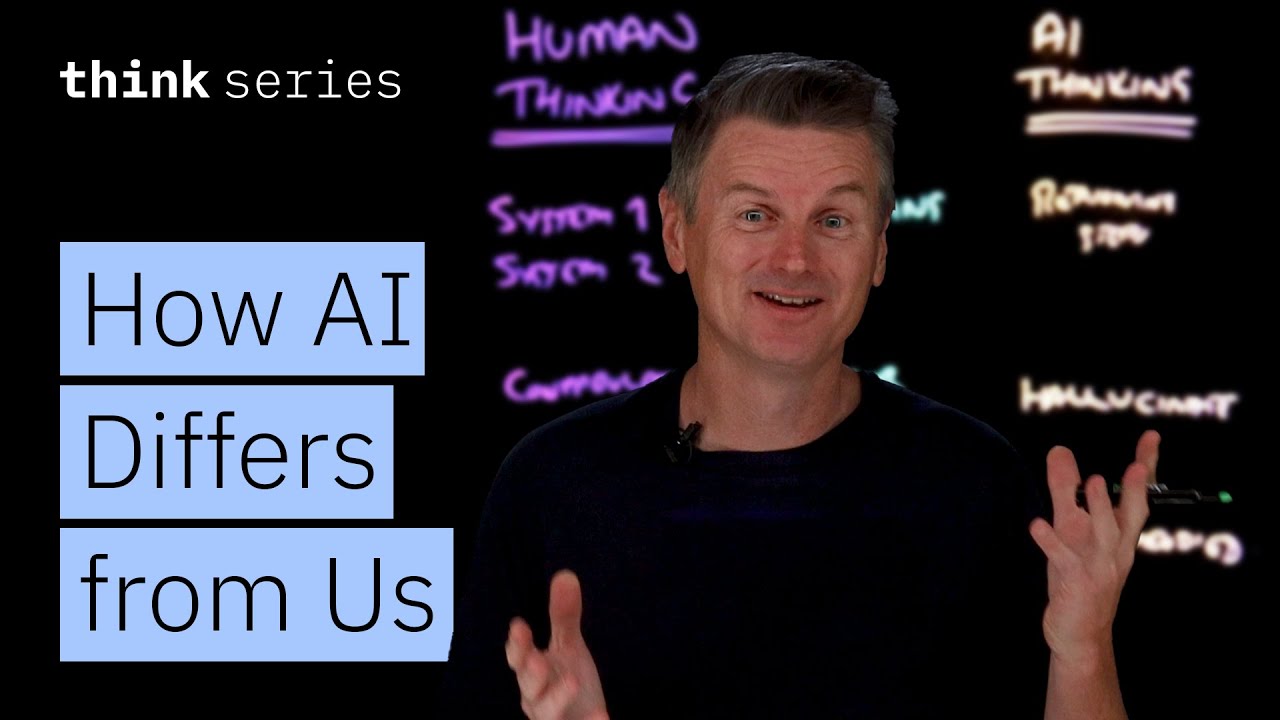The video explains that while both humans and large language models process information through complex networks and learning, humans rely on embodied, context-rich cognition and continuous adaptation, whereas AI models operate through pattern recognition on vast data without true understanding or sensory experience. Despite these fundamental differences, combining human insight with AI’s computational power can lead to powerful collaborative outcomes.
The video explores the differences and similarities between human thinking and how large language models (LLMs) like AI operate. Both humans and LLMs process information through complex networks—biological neurons for humans and artificial neurons for AI—and both improve performance through learning. However, the mechanisms of learning differ significantly. Humans learn through neuroplasticity, where neural connections strengthen with experience, often requiring only a few examples to form lasting memories. In contrast, LLMs learn via backpropagation, processing millions of text examples to adjust internal weights, requiring vast amounts of data and many iterations. Once trained, AI models generally do not update their knowledge dynamically, unlike humans who continuously learn and adapt.
When it comes to information processing, the human brain operates in a massively parallel and distributed manner, processing concepts and linking them to prior knowledge and context. Humans grasp meaning in chunks rather than decoding word by word. LLMs, however, work with sequences of discrete tokens, predicting the next token based on patterns learned during training. This token-based approach is more about pattern completion than genuine understanding. Similarly, human memory is multifaceted, including sensory, working, and long-term memory, all associative and context-rich. LLMs have a simpler memory system, with knowledge encoded in static model weights and a limited context window that forgets information once it exceeds capacity.
Reasoning in humans involves both fast, intuitive judgments (system one) and slow, logical deliberation (system two). LLMs are primarily trained on outputs resembling system two thinking but do not consciously reason. Instead, they generate plausible token sequences that appear logical without true comprehension. This limitation explains why LLMs can struggle with seemingly simple tasks, such as counting specific letters in a word. Additionally, LLMs are prone to hallucinations—confident but factually incorrect outputs. This phenomenon is somewhat analogous to human confabulation, where people unknowingly create false memories or explanations, highlighting that both humans and AI can err, albeit in different ways.
A fundamental difference lies in embodiment. Humans are embodied beings whose cognition is deeply influenced by physical interactions with the world, grounding their understanding in sensory experiences. LLMs, however, are disembodied software entities without direct sensory input or physical presence. Their knowledge of the world is secondhand, derived solely from text written by humans. This lack of embodiment limits AI’s common sense and real-world understanding, making it prone to errors that humans would rarely make due to lived experience.
In conclusion, while AI models and human minds can produce similar outputs such as stories, answers, and creative content, the nature of their cognition is fundamentally different. Humans bring genuine comprehension, meaning, and embodied experience, whereas AI offers speed and vast knowledge breadth. Combining these complementary strengths holds the potential for powerful collaborations, leveraging human insight alongside AI’s computational capabilities to achieve the best outcomes.
